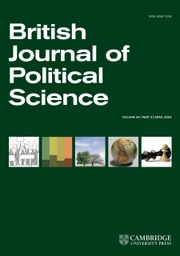Article contents
Uncovering High-Level Corruption: Cross-National Objective Corruption Risk Indicators Using Public Procurement Data
Published online by Cambridge University Press: 24 August 2017
Abstract
Measuring high-level corruption is subject to extensive scholarly and policy interest, which has achieved moderate progress in the last decade. This article develops two objective proxy measures of high-level corruption in public procurement: single bidding in competitive markets and a composite score of tendering ‘red flags’. Using official government data on 2.8 million contracts in twenty-eight European countries in 2009–14, we directly operationalize a common definition of corruption: unjustified restriction of access to public contracts to favour a selected bidder. Corruption indicators are calculated at the contract level, but produce aggregate indices consistent with well-established country-level indicators, and are also validated by micro-level tests. Data are published at http://digiwhist.eu/resources/data/.
Information
- Type
- Articles
- Information
- Copyright
- © Cambridge University Press 2017
Footnotes
Department of Sociology, University of Cambridge (email: mf436@cam.ac.uk); Government Transparency Institute (email: gaborkoxis@gmail.com). The authors would like to express their gratitude to generous funding from the European Union 7th Framework program (grant title: ANTICORRP; grant agreement no: 290529) and the Dutch Presidency of the European Union (project title: Public Integrity and Trust in Europe). They also thank the anonymous reviewers and numerous people commenting on earlier drafts of this article and database, in particular, Alina Mungiu-Pippidi, István János Tóth, Carl Dahström, Johannes Wachs, Luciana Cingolani, Nicholas Charron and Viktor Lapuente. Replication data sets are available in Harvard Dataverse at: https://dx.doi.org/doi:10.7910/DVN/6XYZOD and online appendices are available at https://doi.org/10.1017/S0007123417000461.
References
BIBLIOGRAPHY
- 98
- Cited by

